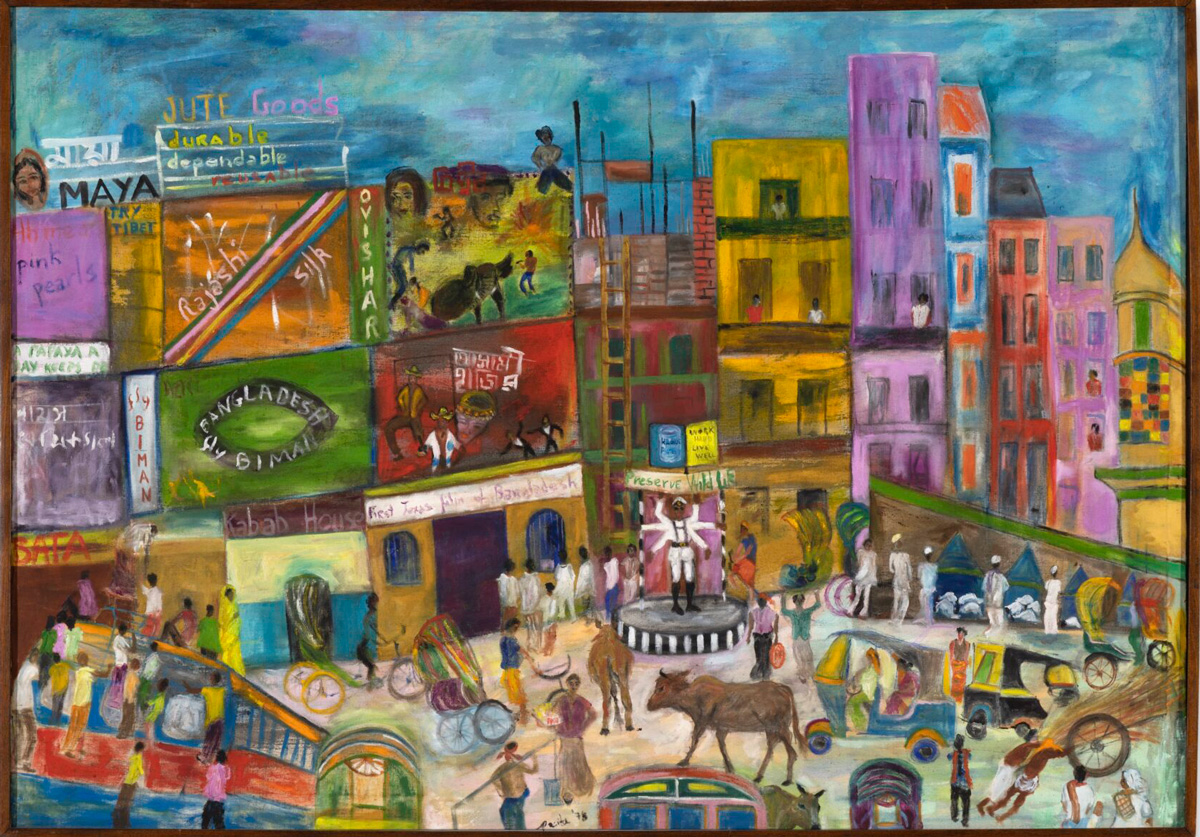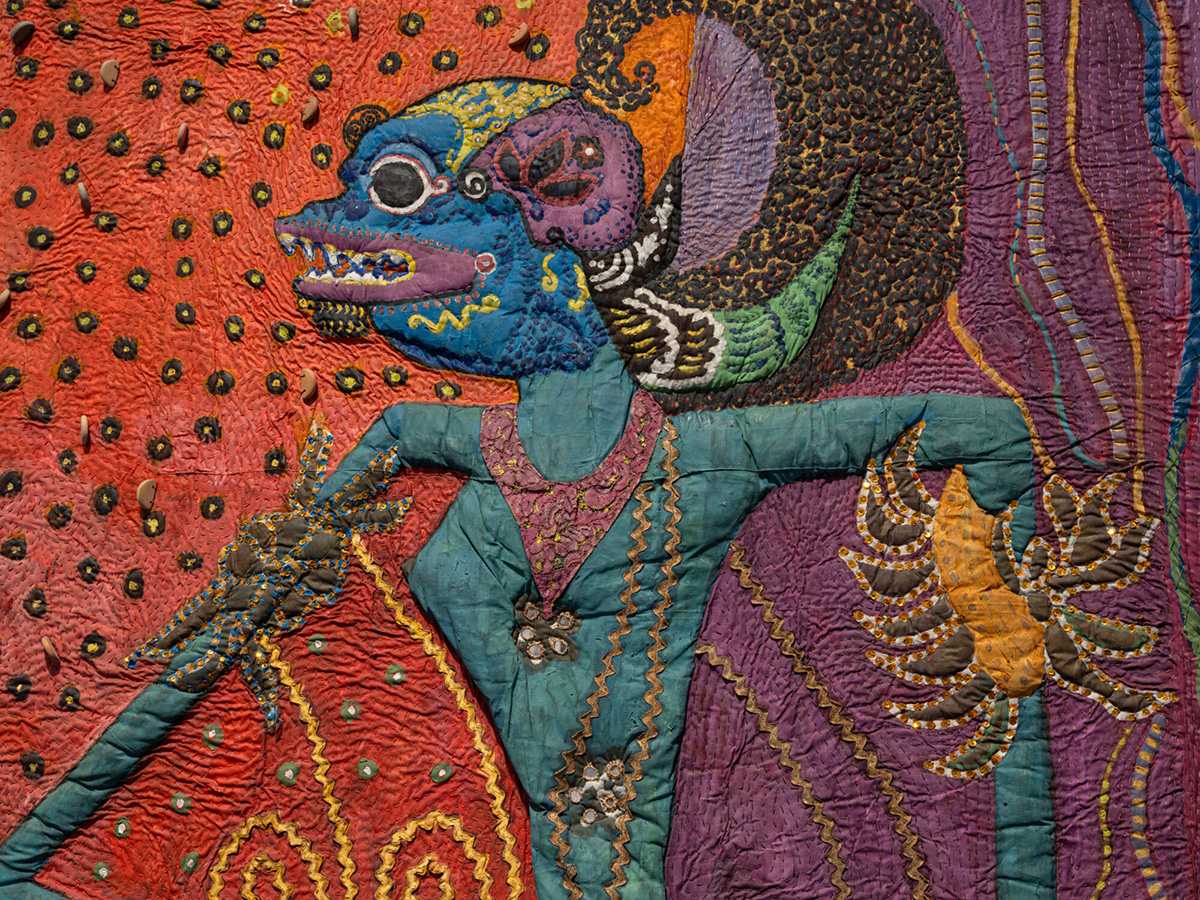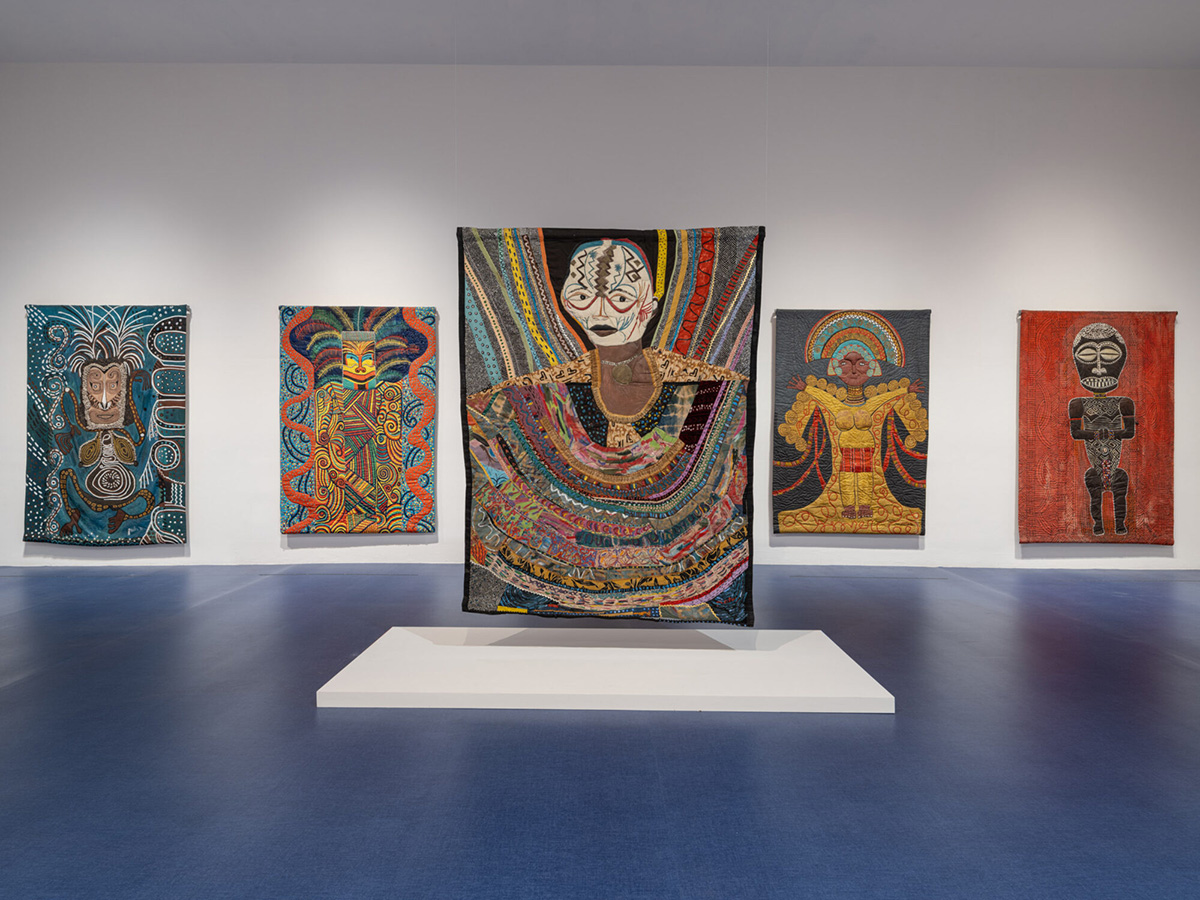ART CITIES: N. York-Pacita Abad
 Widely defined by her use of color, something she remained adamant about from her early studies, Pacita Abad pioneered new forms of materiality in her work, illustrated in one instance by her widely celebrated trapunto paintings, a form of quilted painting the artist originated by stitching and stuffing her painted canvases instead of stretching them over a frame. Her oeuvre featured an immense array of subject matter, from tribal masks and social realist tableaus to lush and intricately rendered underwater scenes and abstractions.
Widely defined by her use of color, something she remained adamant about from her early studies, Pacita Abad pioneered new forms of materiality in her work, illustrated in one instance by her widely celebrated trapunto paintings, a form of quilted painting the artist originated by stitching and stuffing her painted canvases instead of stretching them over a frame. Her oeuvre featured an immense array of subject matter, from tribal masks and social realist tableaus to lush and intricately rendered underwater scenes and abstractions.
By Dimitris Lempesis
Photo: MoMA Archive
The retrospective “Pacita Abad” spans the artist’s 32-year career and features over 50 works, most of which have never been on public view, drawn from private and public collections across Asia, Europe, and the United States. The presentation includes vibrant paintings, works on paper, and trapuntos-the painted, stitched, and stuffed canvases she began making in the 1980s and for which the artist is best known. While engaged with artistic and political dialogues during her life, the depth, range, and inventiveness of her work is only now coming to prominence. Commemorating the extensive contributions of an innovative yet under-recognized figure, Pacita Abad celebrates the artist’s feminist and transnational outlook, commitment to social justice, and belief in the transformational power of creativity. In 1970, Abad migrated to the United States to escape political persecution in the Philippines, after she led a student demonstration against the authoritarian Ferdinand Marcos regime (1972–86). Driven by this experience, she centered political refugees and those who were oppressed in her work. In 1977, Abad enrolled in the Art Students League in New York for a year to study anatomy, still life, and figurative painting. Although she became a US citizen in 1994, she lived an itinerant lifestyle in various countries—including Bangladesh, Yemen, Sudan, Papua New Guinea, and Indonesia—where she encountered local makers across the globe who furnished her with a wealth of ideas, techniques, and materials to draw upon when creating her trapuntos. Her works were designed to be portable, and she often used textiles, demonstrating her appreciation for the female and non-Western labor associated with the craft, which has been historically undervalued. The exhibition highlights the significance of her immigrant experience and the development of her practice celebrating non-Western art forms. The works in the exhibition are organized in loosely chronological order with overlapping themes that span decades. On display are powerful 1970s Social Realist works, which depict people escaping persecution and poverty. In the “Immigrant Experience series” (1983–95) of mixed media trapunto paintings, she depicted diasporic communities from Asia, Africa, and Latin America, reflecting her conviction that artists have a “special obligation to remind society of its social responsibility.” Also on view are works inspired by Indigenous masking traditions, including “Masks from Six Continents” (1990–93), installed for the first time in 30 years. Abad’s engagement with patterned abstraction was inspired by jazz and blues music, and her works capture the unique spontaneity of the musical styles, showcasing her energetic interplay between figuration and abstraction as well as her engagement with people, places, and critical issues of her time. The artist’s decades-long engagement with patterned abstraction was in part inspired by late nights listening to jazz and blues, with numerous works capturing the idiosyncratic spontaneity and syncretic sensibility of those musical idioms. Abad’s works inspired by the electric colors of marine wildlife are also included, highlighting her sensitivity to the beauty and precariousness of the Earth’s ecosystems. Together, the featured works showcase the energetic interplay between abstraction and figuration in Abad’s practice and illuminate her engagement with people, places, and critical issues of her time.
Photo: Pacita Abad. Old Dhaka. 1978. Oil on canvas. Courtesy Pacita Abad Art Estate. Photo: Rik Sferra for Walker Art Center
Info: Curators: Victoria Sung, Matthew Villar Miranda, Ruba Katrib, Sheldon Gooch, MoMA PS1, 22-25 Jackson Avenue, Long Island City, Queens, NY, USA, Duration: 4/4-2/9/2024, Days & Hours: Mon, Thu-Fri & Sun 12:00-18:00, Sat 12:00-20:00, www.momaps1.org/


Right: Pacita Abad. Filipina: A Racial Identity Crisis. 1992. Lithograph with pulp-painted chinecollé and metallic powder on paper, edition of 40. Courtesy Pacita Abad Art Estate. Photo Rik Sferra for Walker Art Center

Right: Pacita Abad. Self-Portrait. 2003. 24-color paper pulp, mixed-media collage on shaped, handmade STPI paper assemblage. Produced at STPI – Creative Workshop & Gallery, Singapore. Courtesy Pacita Abad Art Estate and STPI


Installation view of Pacita Abad, on view at MoMA PS1 from April 4 through September 2, , 2024. Photo: Kris Graves
